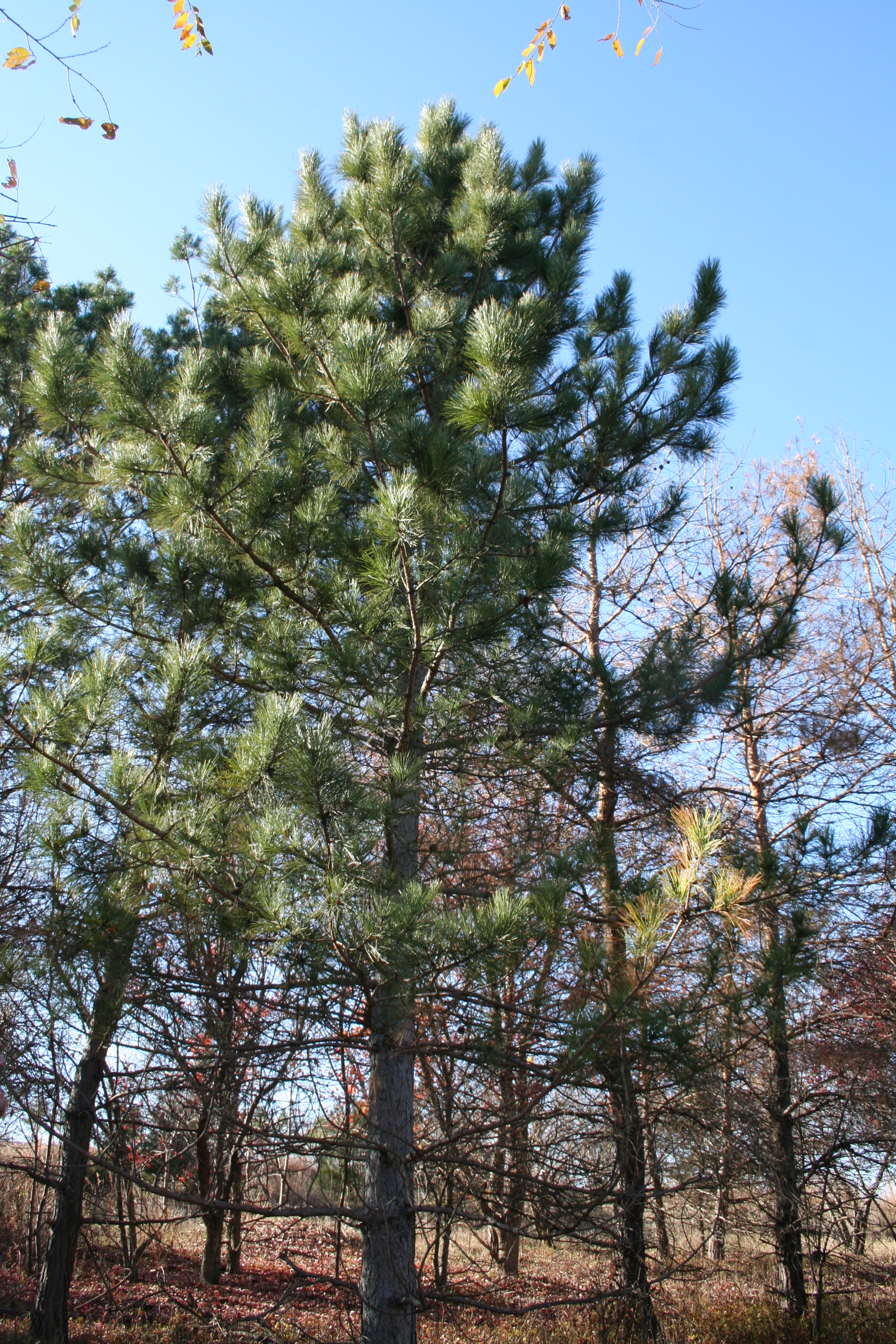Pine, Red
Pinus resinosa, Coniferous
Red pine is a medium-sized evergreen native from eastern Canada south to Minnesota and east to New York. It is typically found on hills, slopes, ridges and plains, often in sandy soils. It is sometimes planted in Nebraska.

Where To Grow

Size at Maturity
| Tree Height | Tree Spread |
| 40-60' | 30-40' |
Tree Characteristics
Red pine is a conical, straight-trunked tree with horizontal to ascending branching and an oval to rounded crown. It can grow to over 100’ tall in the wild but is usually in the 45-70’ range in cultivation. The common name of "red pine" is in reference to the tree's bark which is red tinged from crown to base, resembling that of Ponderosa pine. The sharply-pointed, yellow-green to dark green needles (4-6" long) are in bundles of two and snap crisply when bent (a key to its identification). Seed cones grow to 2 1/2" long and mature to chestnut brown in the second year. Cone scales lack prickles.
Wildlife Benefits
As with most pines, a variety of birds, mammals, and other animals utilize the tree's seeds for food and the tree itself for cover.
Utilization
Red pine has been commercially used for pulpwood and structural timber.
Additional Considerations
In cooler climates, healthy, well-maintained trees usually have few major problems. However, the tree can struggle in the heat and humidity of Nebraska, especially the southern tier where needle cast, needle blight, and rusts may occur. Insect pests on stressed trees include sawflies, pine beetles, pine gall weevil, tussock moth and pine needle miner.
Interesting Facts
The scientific name refers to a resinous pitch that is frequently encountered on the tree. Red Pine is the state tree of Minnesota.


